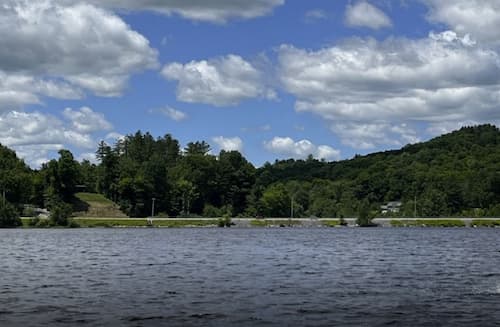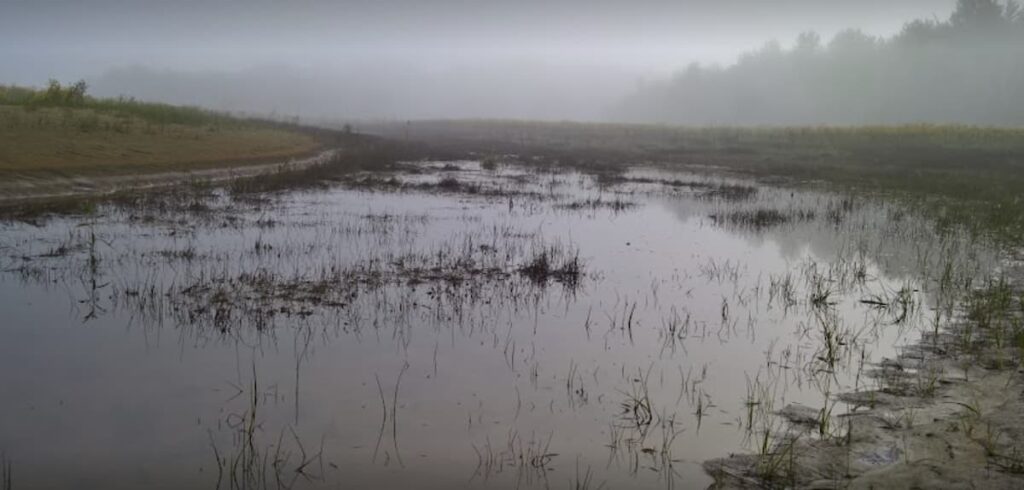
Hickenly Reservoir is one of the most famous lakes in New York. It provides water to Utica and is also a key source of hydropower. Moreover, the lake offers recreational activities all year round. It partly falls within Oneida County, while the other half falls within Herkimer County.
The reservoir also has a sister lake called Delta lake, which provides water to the Erie Canal. If you enjoy outdoor activities with family and friends, make sure to put Hickenly Reservoir on your itinerary. This blog post will explore this fantastic water body’s historical, geographical, and recreational aspects.
Without further ado, let’s dive in.
History of the Hickenly Reservoir
Initially, the Consolidated Water Company owned and controlled the public water supply for Utica. The main water supply came into being in 1850. It has a reservoir that receives water from Grafenberg Springs. These springs were located in a hilly area in the southern part of the city.
With an increase in population, the need for water also increased. As a result, various reservoirs and streams were made. These streams and reservoirs are now known as the Southern Supply. In 1907, the city started receiving water from West Canada. In 1915, the Barge Canal project reached completion.

It was because of this reservoir that the West Canada supply was taken in 1918. In 1917, something awful happened. A different kind of typhoid broke out within the locale, affecting many of the population.
Upon investigation, the testers found that it was due to the water quality reaching the people.
Further research suggested that the water in the mains came from polluted sources, which led to the virus outbreak.
Samples of water were then tested. The testers found high active contamination and bacteria counts in the water. The testers also discovered the presence of E.Coli type organisms within the water.
In 1928, some people requested the authorities change this reservoir’s name. They called it Kuyahoora Lake. However, most locals continued to call it the Hickenly reservoir, and they have been calling it Hickenly since.
In 1918
The intake of this reservoir was located almost in the middle of the dam. It used to have a gatehouse. The intake point was over 20 feet below the surface of the water. From the intake, the water would flow for 10 miles across mains that were 24 inches wide.
Through these mains, the water would reach the town of Marcy, which was located 6 miles to the North of Utica. The lake provided water to two distributing reservoirs. One of them is known As the Marcy Reservoir, and the second one is the Deerfield Reservoir, which is located in Deerfield.
The Marcy Reservoir has a capacity of 15000000 gallons. From here, a 24-inch main went to the northwestern part of the distribution mains. The Deerfield Reservoir was somewhat similar to the Marcy reservoir. Except it had a capacity of 106,000,000 gallons.
From the Deerfield Reservoir, a 20-inch main led to the distribution system at Genesee Street. Around this point, the New Hartford distribution system had a standpipe with a capacity of 150,000 gallons. In parallel, the Oriskany reservoir had a 250,000 gallons standpipe.
Recently, a smaller supply has been obtained from Keels Creek, which isn’t too far from the Deerfield reservoir. However, this supply is not in use at the moment. The water company maintains a monthly patrol to record the watersheds, which allows them to maintain sanitary conditions following the rules.
Construction of the Dam
The dam is situated near Hickenly village and crosses West Canada Creek. It was built in 1915 by the New York State. Its purpose was to supply water to the canal. Hickenly reservoir was present at its current site for two reasons.
First, it enjoyed elevation above the channel and its proximity to the canal. The dam is 3700 feet long, and a concrete wall guards it. Towards the creeks are gates and a spillway that is 400 feet long.
If we talk about the dam’s masonry, its content is 110,020 cubic yards. The maximum height of the masonry is 82 feet. The embankment, on the other hand, is 611,200 cubic yards. At crest level, the area of the reservoir is 4.46 square miles.
It has a maximum depth of 75 feet and an average depth of 28 feet. The capacity of the pools is 3,445,000,000 cubic feet.
The Geography Behind It

The topography of the watershed is 372 square miles. The altitude is somewhere between 1165 and 3100 feet. The drainage basin is located at a place that receives the highest precipitation in the state.
The rainfall is the highest in the winter months and comes in the form of snow. As discussed above, the maximum crest level depth is 28 feet. To attain this depth, 209 buildings had to be removed. These buildings made up three parts of the village.
The lake is precious for flood regulation. It has minimized the maximum rate of flood discharge.
How is the Fishing?
Fishing is one of the most popular activities at the Hickenly Reservoir. The most common fish species at the reservoir are Rock Bass, Smallmouth Bass, Black Bullhead, Yellow Perch, Pickerel, and Trout. If you are up for a fishing trip, you can rent a boat for a nominal fee.
Final Word
There is a lot of history attached to the Hickenly Reservoir. Unlike most water bodies, this isn’t just a lake. It is a source of water, energy, and recreation. If you have a love for history, as well as a taste for adventure, the Hickenly Reservoir is the place for you. The picturesque sceneries, the recreational activities, and the fish species are fascinating.
